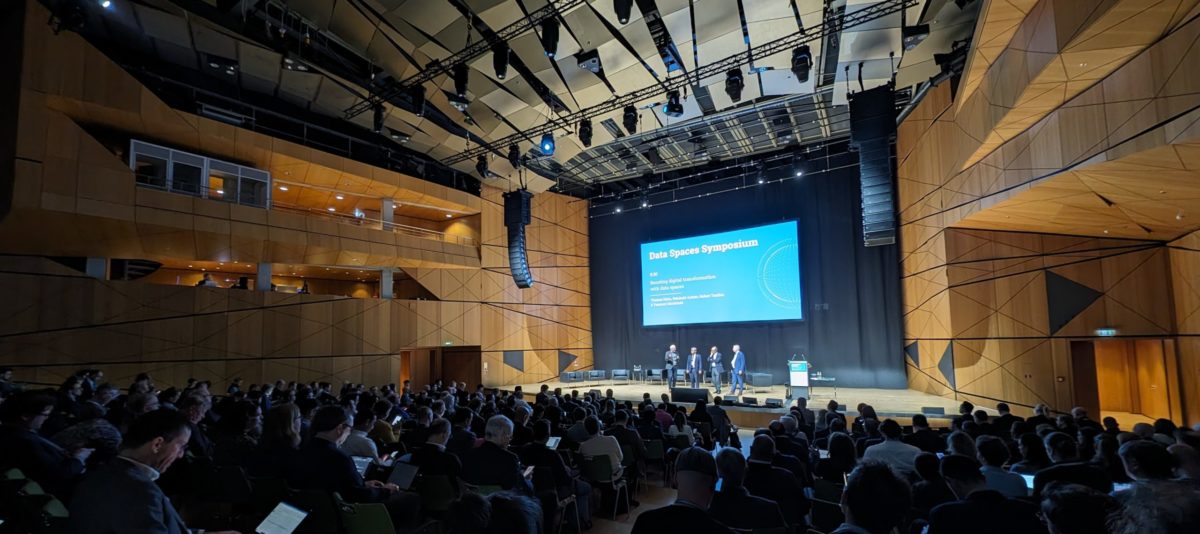
Data Spaces Symposium 2024
The 2024 Data Spaces Symposium drew over 1.000 participants to wetransform’s hometown of Darmstadt, Germany.
Under the banner “Unite. Innovate. Adopt.”, the Darmstadtium Science and Conference Centre became, for the midweek of March 12-14, the place to connect with fellow experts and learn more about the future of sovereign data sharing.
As an event sponsor, wetransform came equipped with a booth to showcase some of our most important projects and advancements surrounding data spaces. Our partners at the International Data Space Association (IDSA) also gave us the opportunity to present our work in a session titled "Data spaces: Pioneering solutions for implementation, examples for successful operation".
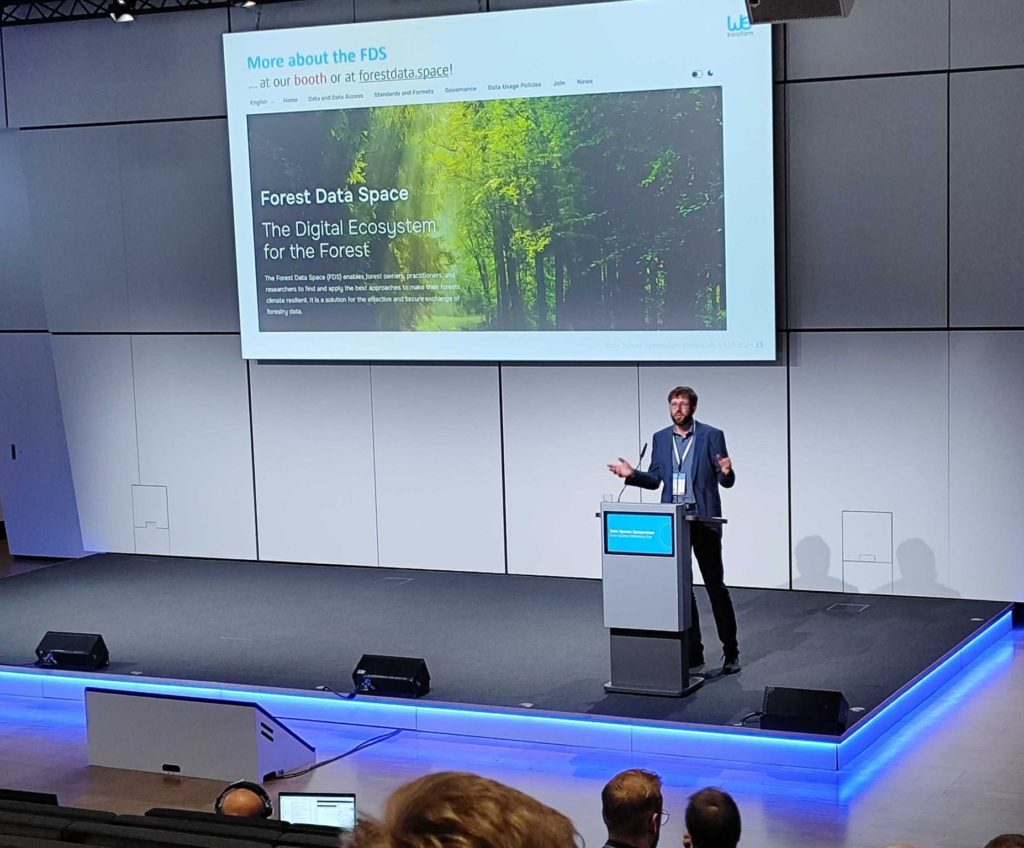
In this blog, we’ll share some of what we've taught and learned.
New Approaches to Data
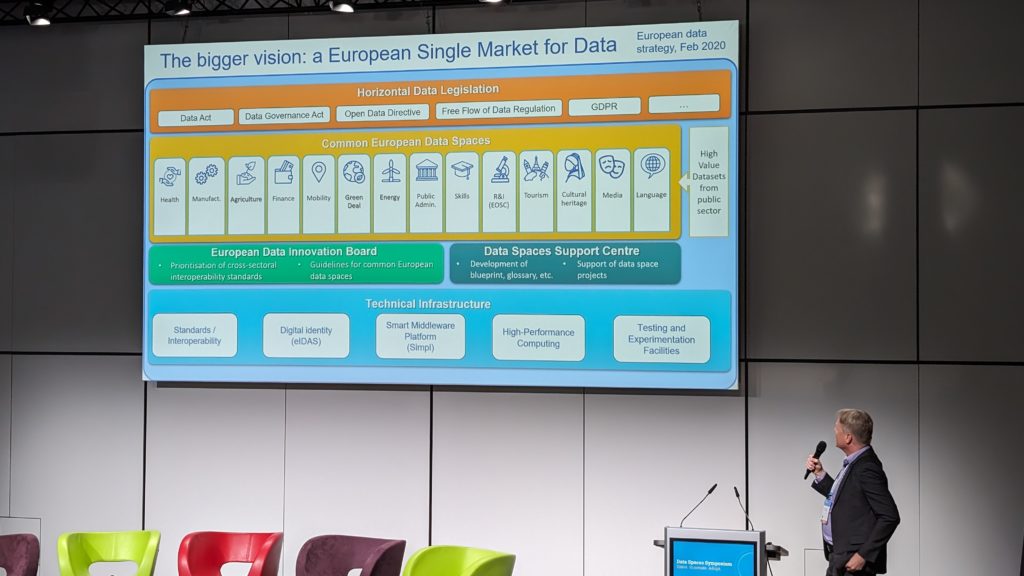
Many participants of the symposium emphasised that there needs to be a change in the way data is perceived and handled. Collaboration is the key to larger, more accessible pools of reliable data. These pools of data would significantly cut down on time needed in research, e.g. for data cleaning, and boost powerful tools, such as machine learning, to reach their potential. At the same time, some of the information within that data needs to be safeguarded from bad faith actors.
Trustworthiness was one of the words that kept coming up throughout the conference, a natural consequence of the data space’s emphasis on data sovereignty and secure access restricted to those with legitimate interest in the available data.

At wetransform, we already champion these new ways of thinking through the Environmental Data Spaces Community. This community aims to define the standards and patterns required to optimise environmental data for AI and decision support systems. The community extends beyond single projects, so more organisations and people can benefit from its advancements.
Ecosystem, referring to multiple data spaces being used together, was another key word at the Data Spaces Symposium. On this topic, wetransform is already working on InGeo-X. This data intermediary is specifically for sensitive public and private geospatial and remote sensing data. It supports the development of a trustworthy national geodata-ecosystem within Germany.
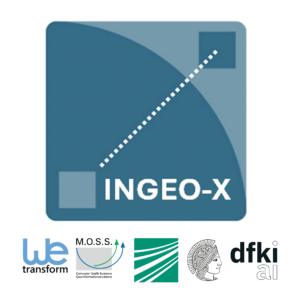
With our experience in geospatial data, we are experts at using and harmonising data from different sources and often try to make use of them together. This enables us to exchange data in a more controlled, and therefore more trusted fashion.
In one of the last sessions of the Data Spaces Symposium, the European Commission’s Marcin Baryn presented on the amount of open data currently available in Europe. He reminded us that it’s very important not to forget the efforts made by the open-source data community over the past years. We can learn a lot from their successes and think about how to use open data in data spaces, particularly in value-added offerings.
Working Data Spaces
As data space technology matures, examples of functional data spaces are becoming more prevalent. The ZF Dataspace Operating System (ZF DOS), for example, was presented as a platform to utilise and manage data spaces within the automotive industry.
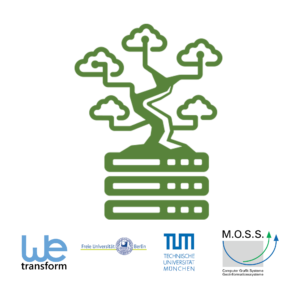
At wetransform, the Forest Data Space was created for our Future Forest project, which aims to make forestry more resilient to climate change through data-driven decision making. It will integrate both AI and simulation models and, thanks to the work of over 30 associated organisations, its forestry data already covers Germany.
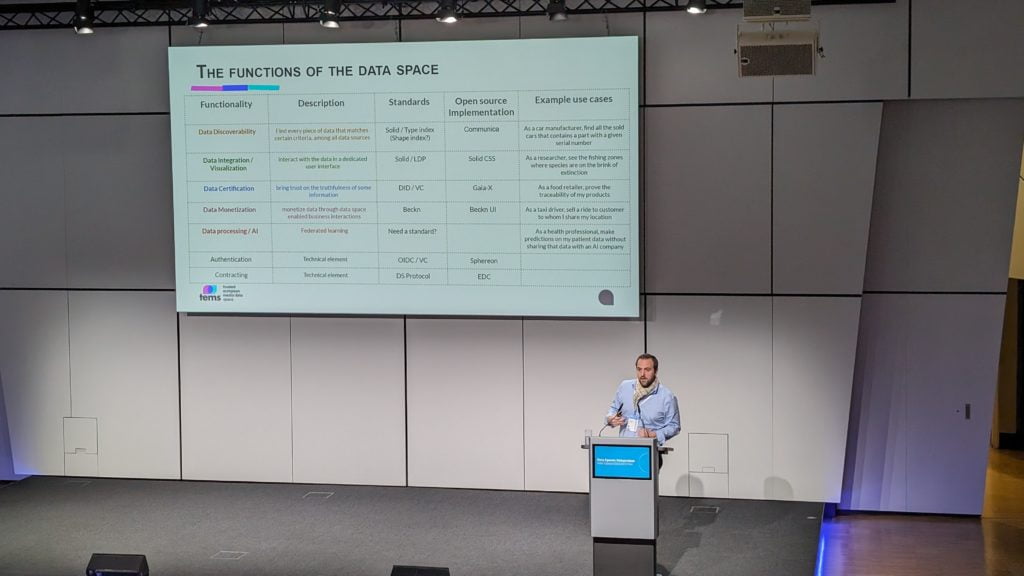
There are also an increasingly large number of business cases across industries such as energy, manufacturing, health, mobility, and others that are implementing the Gaia-X framework.
Standardisation and Interoperability
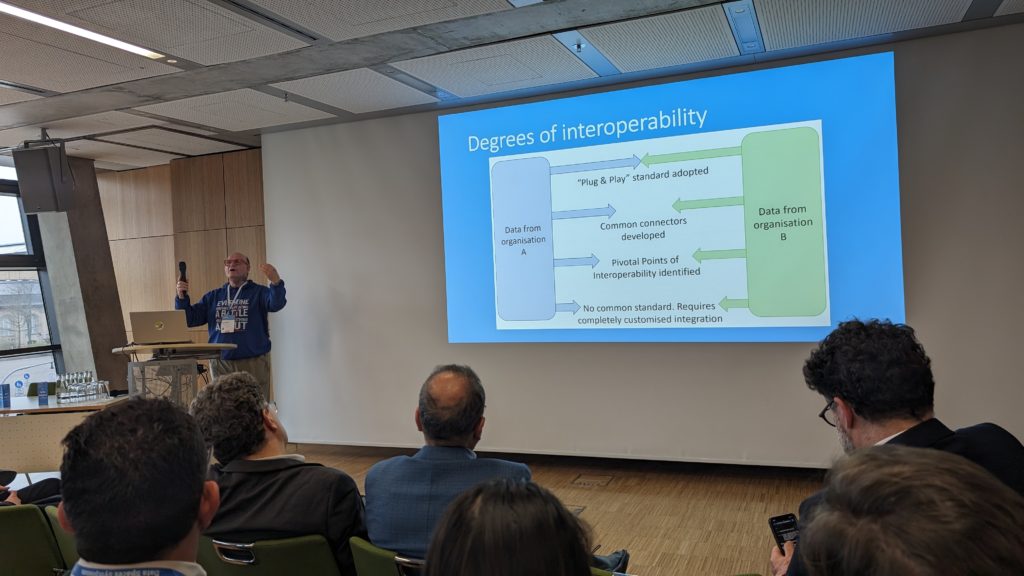
As a company always at the forefront when it comes to greater data interoperability, we were delighted to learn that ISO/IEC AWI 20151: “Cloud computing and distributed platforms, Dataspace concepts and characteristics” is expected to become an ISO standard next year. This standard aims to provide commonly accessible foundational concepts and essential characteristics of data spaces.
Open & Agile Smart Cities (OASC) presented their concepts for Minimal Interoperability Mechanisms (MIMs) within data spaces, a set of practical capabilities based on open technical specifications that allow cities and communities to replicate and scale solutions globally. The presentation focused on the development of solutions that would not provide a "full mapping" or complete plug-and-play interoperability between data spaces, but rather some minimal level of interoperability.
The Future
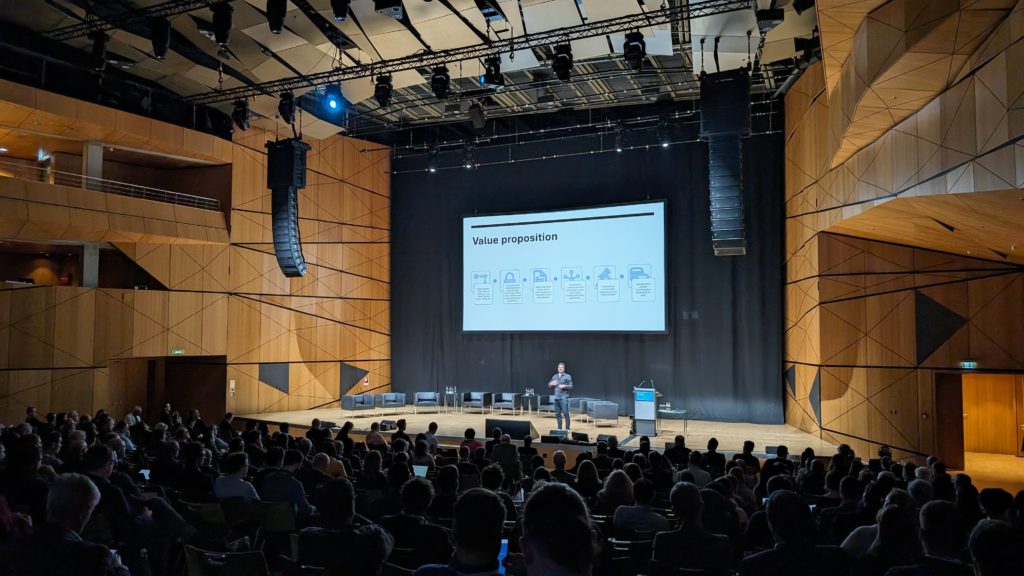
With data spaces, and even ecosystems made up of multiple data spaces, becoming an ever-increasing reality, the symposium allowed us to cast an eye further into the future.
One clear use for data spaces is the training of Artificial Intelligence (AI), as large accessible pools of harmonised data are a true feast for something that learns from properly annotated and well-described data.
Volkswagen, as a member of Ethical and Trustworthy Artificial and Machine Intelligence (etami), presented “Preparing for the AI Act”. This session focused on how companies can get themselves ready for the EU’s Artificial Intelligence Act, focussing on the penalties for non-compliance. This same session also noted the need for improvement when it comes to testing AI solutions in the marketplace. While the computational requirements for testing are immense, education needs to focus more on the importance security and data provenance testing instead of just performance.
The IDSA, our trusted partners in all things data space, provides a current overview of trends in data spaces in their Data Spaces Radar Report
Conclusion
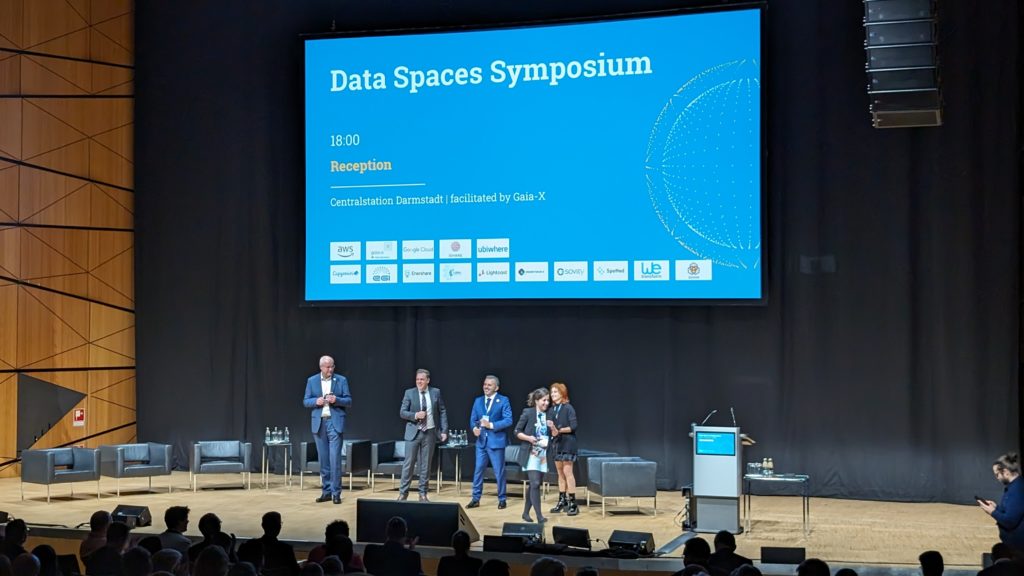
Technical solutions are maturing and becoming easier to use. The Data Spaces Blueprint 1.0, the Dataspace Protocol, and more connectors being certified, such as the one by TNO. However, we are not quite yet at the stage where typical data holders and users can get onboarded onto a data space without specific technical and organisational knowledge.
Alignment between the major initiatives such as GAIA-X and IDSA is still needed. It is in process, but to many participants it is not entirely clear who will build and operate what part of the overall model. More resources will need to be allocated to building the data spaces themselves. The Green Deal Data Space is one of the most complex ones, but quite underfunded compared e.g. to the Energy Data Space.
The breadth and strength of use cases is really impressive. From automobile to tourism and media, from sustainable products to climate adaptation: People are applying the principles of secure and sovereign data sharing to all sectors. This is a community that stands for sharing, for collaboration, and for making real things better based on data.
Further questions? We'd love to help!
Reach out to us here.





